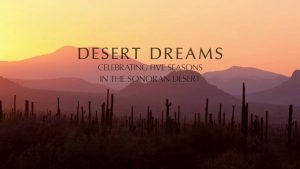Study unveils connection between gray wolves and ecosystems
Oct. 12, 2023
A recent study unveiled the connection between gray wolves and the effect their genetics have on the ecosystems around them.
As top predators, gray wolves profoundly impact their environment by controlling herbivore populations and affecting vegetation growth and diversity. Several years ago, the population of gray wolves at Isle Royale National Park (IRNP), a remote wilderness area located in Lake Superior, underwent an unfortunate decline due to inbreeding.
Dr. Philip Hedrick, Emeritus Professor at ASU’s School of Life Sciences, joined Arizona Horizon to discuss the relationship between these ecosystems.
“It’s an amazing story,” Dr. Hendrick said. “It’s on Isle Royale, which is in Lake Superior, a national park, and there, there are predator wolves and there is one prey item: moose. We have a predator-prey interaction. The wolves eat the moose and then the moose eat what is called balsam fir, a tree. You have this interaction between the predator affecting the moose number. The moose number affecting the forest, the balsam fir.”
Professor Hedrick, Sarah Hoy, a researcher from Michigan Technological University, and their team embarked on a two-decades-long investigation of the IRNP wolves. They found the arrival of a single wolf, M93, rescued the population by allowing for genomic diversity, improving overall fitness and increasing wolf numbers.
As genes changed and wolves thrived, predation rates on moose peaked. Moose are their primary prey and the dominant mammalian herbivore on the island. However, as inbreeding levels increased again, predation rates dramatically declined.
“I think this is a simple system, it affects the predator, the prey, then it can affect the whole ecosystem,” Hedrick said.























